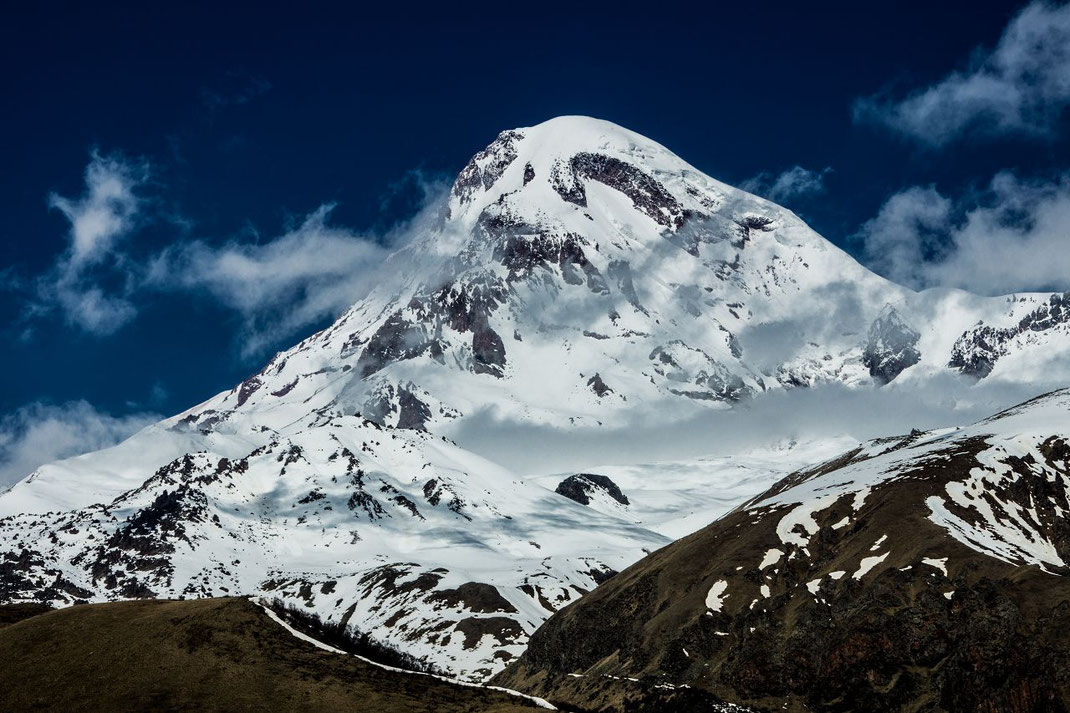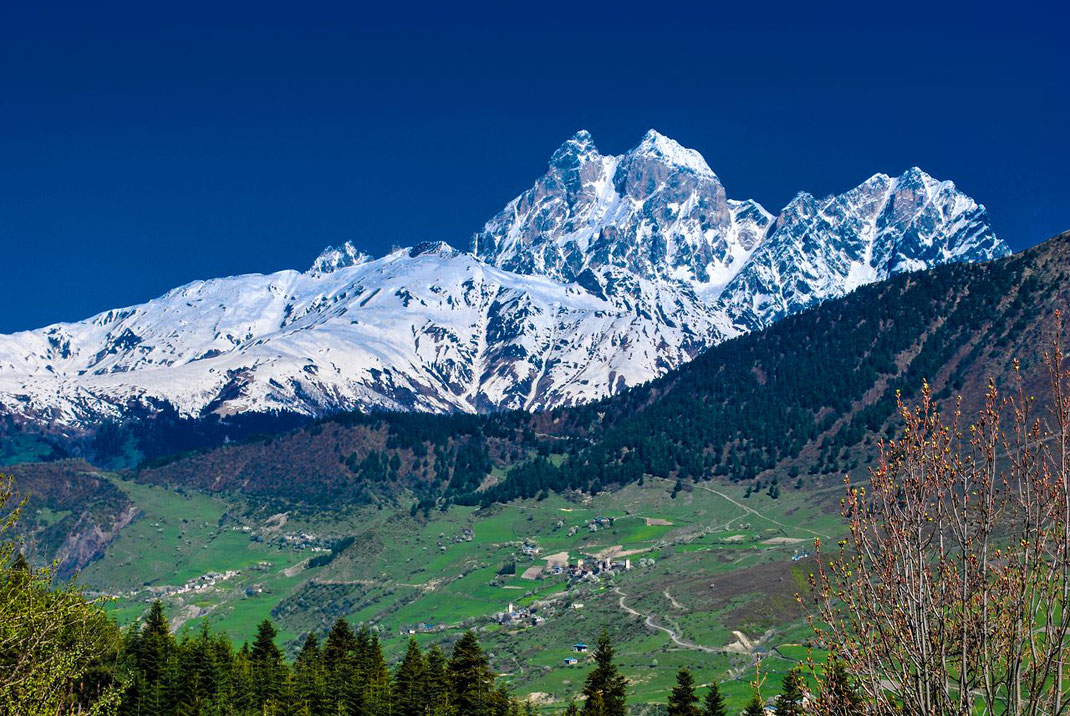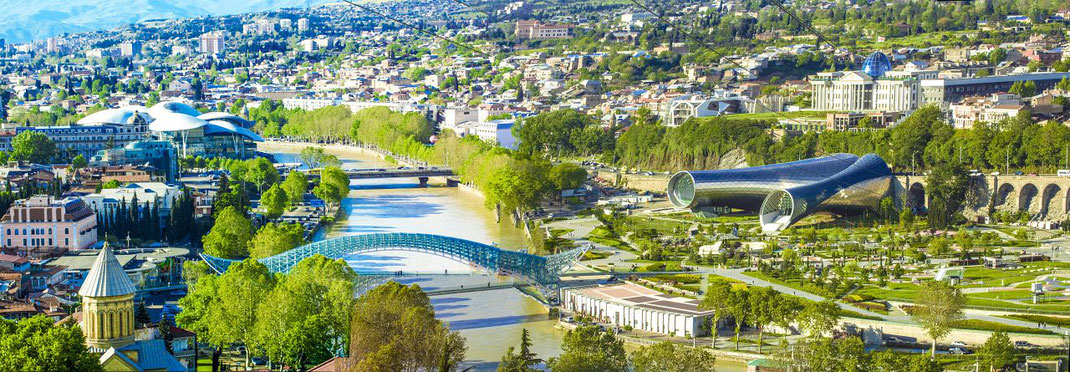
Georgia
is a country located at the intersection of Eastern Europe and West Asia, and generally considered to be part of Europe.
Nestled between the Greater Caucasus and Lesser Caucasus mountain ranges, it is bounded to the west by the Black See, to the north and northeast by Russia, to the south by Turkey and Armenia, and to the southeast by Azerbaijan.
The capital and largest city is Tbilisi.
During classical antiquity, several independent kingdoms became established in what is now Georgia. The most prominent of these Georgian precursor states, Colchis in the west and Iberia in the east, adopted Christianity as their state religion in the early 4th century. Following a complex period of nation building, a unified Kingdom of Georgia reached the peak of its political and economic strength during the reign of King David IV and Queen Tamar from the 11th to 13th centuries. In the early modern period, Georgia became fractured and fell into decline due to the onslaught of various hostile empires, including the Mongols, the Ottoman Empire, and Persia. In 1783, Eastern Georgia forged an alliance with the Russian Empire, which led to the gradual annexation of Georgia by Russia starting in 1801.
select a region or continue scroll down
Tbilisi
Tbilisi is the capital and the largest city of Georgia, lying on the banks of the Kura River with a population of roughly 1.5 million inhabitants. Tbilisi is known for its distinctive architecture, which reflects the city's storied past and comprises an eclectic mix of Medieval, Neoclassical, Art Nouveau, Stalinist and Modernist structures
Present-day Tbilisi is one of the safest cities in Europe and frequently ranks among the most popular emerging destinations thanks to Georgia's growing tourism industry
From left to right: the new Tbilisi Public Service Hall, the Sioni Church, the Bridge of Peace, the Music Theater and Exhibition Hall, the Presidential Palace
Mtskheta
One of the oldest cities of Georgia, located approximately 20 kms north of Tbilisi at the confluence of the rivers Mtkvari (Kura) and Aragvi. It was a site of early Christian activity, and the location where Christianity was proclaimed the state religion of Kartli in 337. It remains the headquarters of the Georgian Orthodox Church.
Svetitskhoveli Cathedral (11th century) and Jvari Monastery (6th century) are amongst the most significant monuments of Georgian Christian architecture, and are historically significant in the development of medieval architecture throughout the Caucasus.
Click for a lot of portraits, snapshots
of people I met in Caucasus and on Silk Road
Georgian Military Road
Image courtesy of the Earth Science and Remote Sensing Unit, NASA Johnson Space Center / From Image Analysis Laboratory, NASA Johnson Space Center, Mission-Roll-Frame: ISS05-E-17832 (http://eol.jsc.nasa.gov)
The Georgian Military Road (ca. 212 kilometres long) runs between Tbilisi (Georgia) and Vladikavkaz (Russia) and follows the traditional route used by invaders and traders throughout the ages. From Vladikavkaz, the road stretches southwards up the valley of the Terek before passing through the Darial Gorge (which marks the border between Russia and Georgia). It then passes Mount Kazbek and Gergeti Trinity Church before heading south-west through the Georgian region of Khevi to the Jvari Pass, where it reaches its maximum altitude of 2,379 meters (7,815 feet) (42.5042°N 44.4538°E). Not long after the pass the road passes the Russia–Georgia Friendship Monument, a large concrete monument built in 1983 to commemorate relations between the two countries and the bicentennial of the Treaty of Georgievsk. The road then turns south-eastwards, following the Tetri Aragvi River through Mtiuleti down to the town of Pasanauri, before heading due south. It then passes below the walls of the medieval fortress of Ananuri before cutting across the wide floodplain of the Tetri Aragvi down to a point just north of Georgia's historic capital, Mtskheta, where it merges into Georgia's main East-West highway (the E60). In this guise, the Georgian Military Road technically continues along the right bank of the Kura (Mtkvari) River before reaching nearby Tbilisi.
The Mount Kasbek

Swaneti
Svaneti is probably the most beautiful region of Georgia and the essence of what country can offer to the foreign tourists. All those stunning photos of historical stone villages, lush green valleys and snow-covered mountains

Autonomous Republic of Adjara - Batumi

Batumi is the second largest city of Georgia and the capital of the Autonomous Republic of Adjara, located on the coast of the Black Sea in Georgia's southwest.
It is situated in a subtropical zone at the foot of the Caucasus.
Much of Batumi's economy revolves around tourism and gambling (it is nicknamed "The Las Vegas of the Black Sea"), but the city is also an important seaport and includes industries like shipbuilding, food processing and light manufacturing.
Since 2010, Batumi has been transformed by the construction of modern high-rise buildings, as well as the restoration of classical 19th-century edifices lining its historic Old Town.
The City
Seeside and Boulevard
The Port
People and random snapshots and acquaintances



















































































































































































































